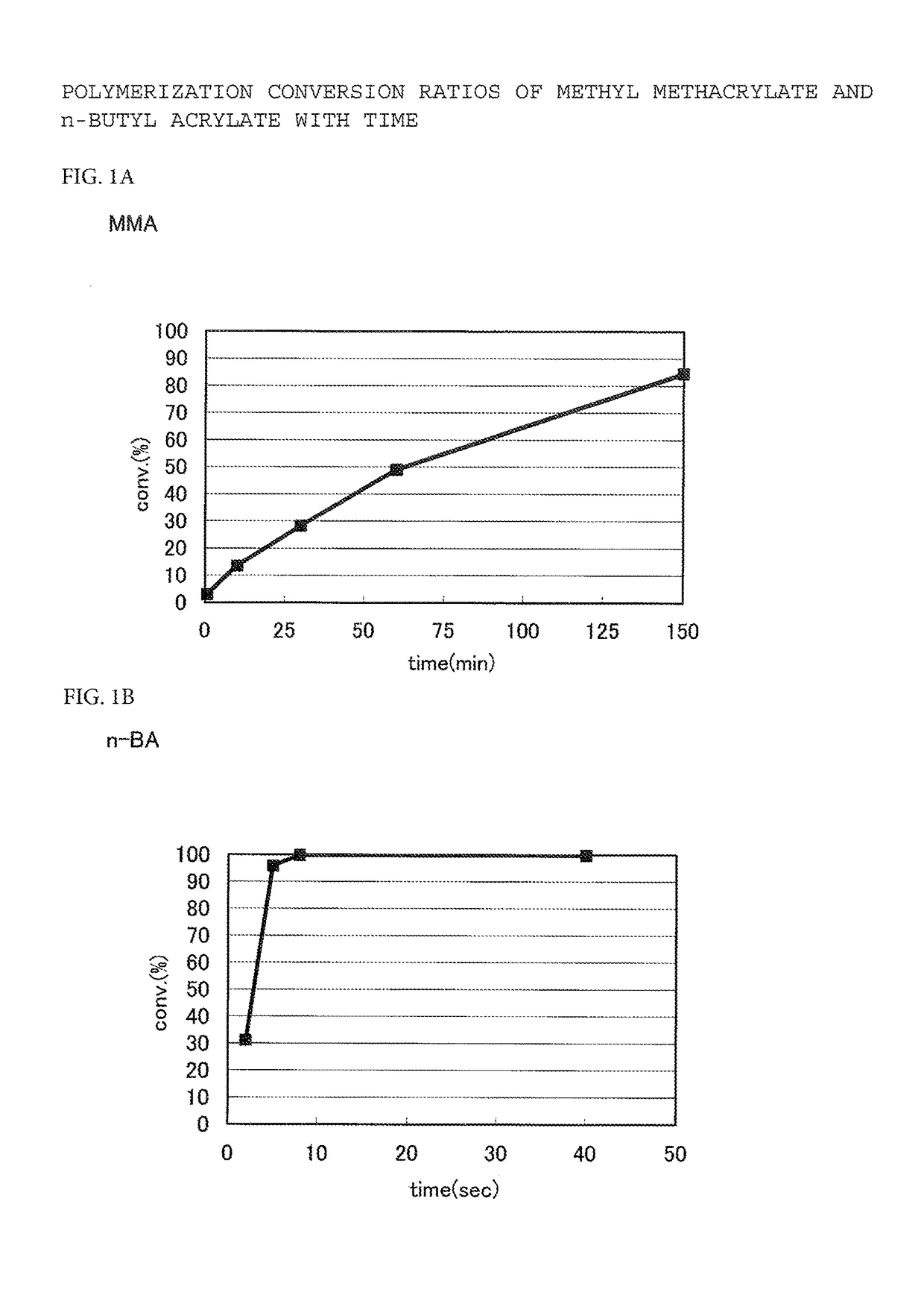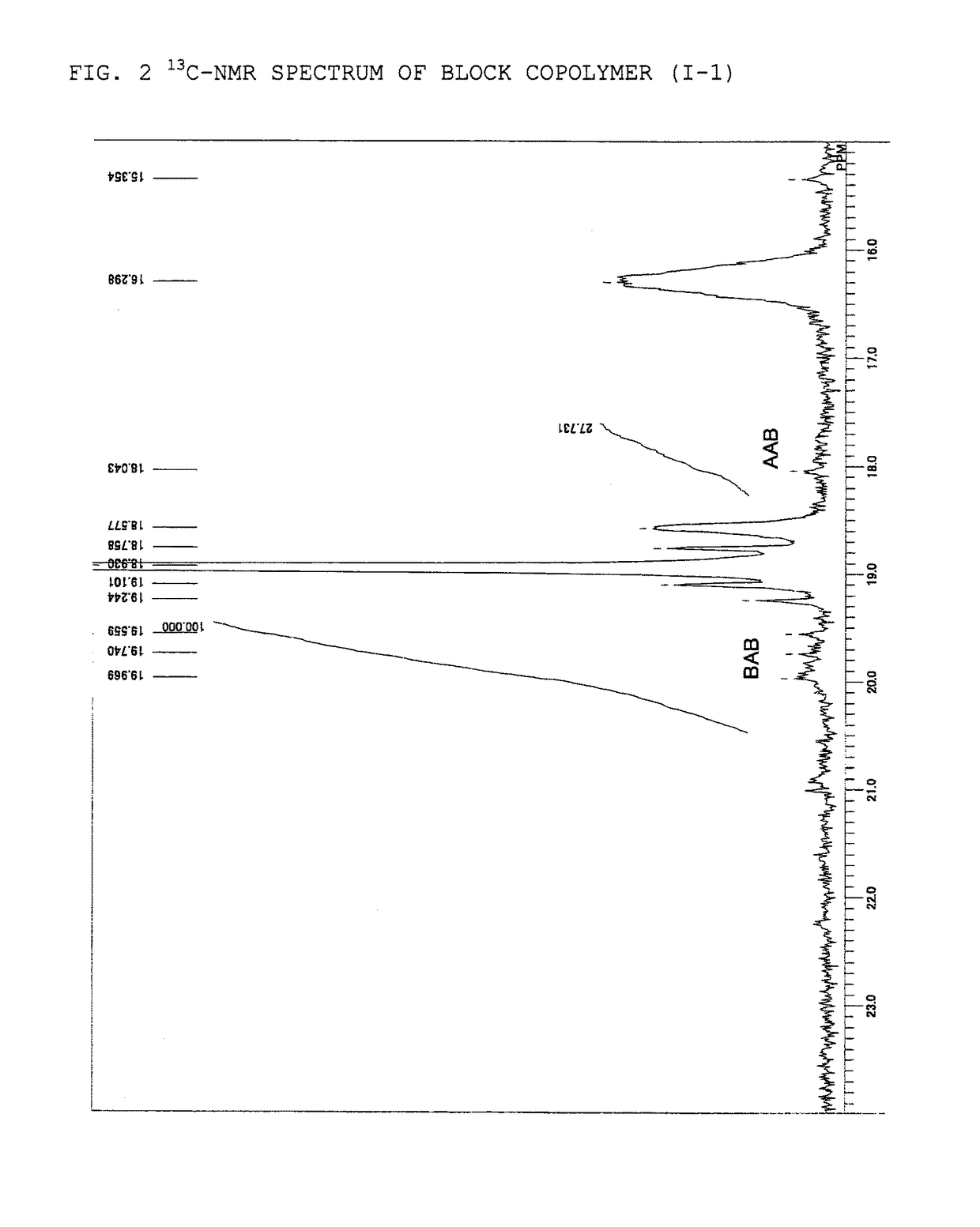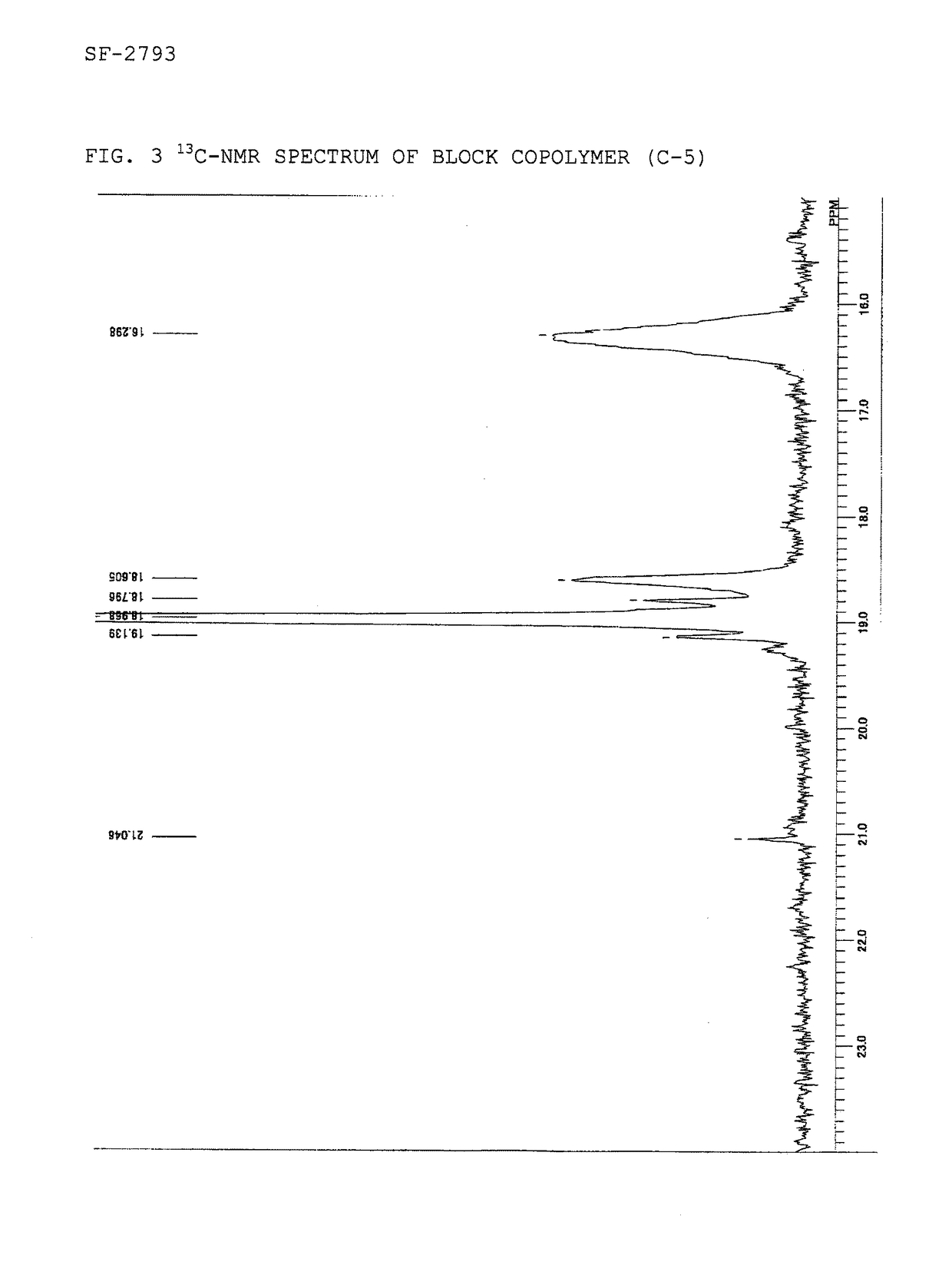Adhesive containing block copolymer
a technology of adhesives and copolymers, applied in the field of adhesives, can solve the problems of odor and toxicity, environmental effects of organic solvents used, waste of water treatment resources, etc., and achieve the effects of good adhesive performance, good weather resistance, and good adhesive performan
- Summary
- Abstract
- Description
- Claims
- Application Information
AI Technical Summary
Benefits of technology
Problems solved by technology
Method used
Image
Examples
synthesis example 1
Synthesis of Block Copolymer (I-1)
[0180](1) The interior of a 100-mL Schlenk flask equipped with a three-way stopcock was purged with nitrogen. Subsequently, 32.0 g of toluene, 0.239 g of HMTETA, and 4.52 g of a toluene solution containing 2.28 mmol of IBT were added to the flask at room temperature. Furthermore, 0.580 g of a mixed solution of cyclohexane and n-hexane containing 0.989 mmol of s-BuLi was added thereto. Subsequently, the resulting polymerization solution was cooled, and 6.94 g of MMA was added dropwise so that the internal temperature became +10° C. to +30° C. The color of the reaction solution was yellow at first, but after stirring for 60 minutes at room temperature, the reaction solution became colorless. The polymerization conversion ratio of MMA at this time was 99.9% or more.
[0181](2) To a 100-mL three-necked flask, the interior of which was purged with nitrogen, 40.8 g of toluene and 6.08 g of the solution prepared in (1) were added at room temperature. Subsequ...
synthesis example 2
Synthesis of Block Copolymer (I-2)
[0185](1) The interior of a 100-mL Schlenk flask equipped with a three-way stopcock was purged with nitrogen. Subsequently, 30.3 g of toluene, 0.219 g of HMTETA, and 6.31 g of a toluene solution containing 3.17 mmol of IBT were added to the flask at room temperature. Furthermore, 0.532 g of a mixed solution of cyclohexane and n-hexane containing 0.906 mmol of s-BuLi was added thereto. Subsequently, the resulting polymerization solution was cooled, and 6.25 g of MMA was added dropwise so that the internal temperature became +10° C. to +30° C. The color of the reaction solution was yellow at first, but after stirring for 60 minutes at room temperature, the reaction solution became colorless. The polymerization conversion ratio of MMA at this time was 99.9% or more.
[0186](2) To a 100-mL three-necked flask, the interior of which was purged with nitrogen, 41.8 g of toluene and 4.81 g of the solution prepared in (1) were added at room temperature. Subsequ...
synthesis example 3
Synthesis of Block Copolymer (I-3)
[0190](1) To a 100-mL Schlenk flask, the interior of which was purged with nitrogen, 30.2 g of toluene, 0.299 g of HMTETA, and 6.15 g of a toluene solution containing 3.09 mmol of IBT were added at room temperature. Furthermore, 0.726 g of a mixed solution of cyclohexane and n-hexane containing 1.24 mmol of s-BuLi was added thereto. Subsequently, the resulting polymerization solution was cooled, and 6.16 g of MMA was added dropwise so that the internal temperature became +10° C. to +30° C. The color of the reaction solution was yellow at first, but after stirring for 60 minutes at room temperature, the reaction solution became colorless. The polymerization conversion ratio of MMA at this time was 99.9% or more.
[0191](2) To a 100-mL three-necked flask, the interior of which was purged with nitrogen, 40.2 g of toluene and 6.68 g of the solution prepared in (1) were added at room temperature. Subsequently, the resulting polymerization solution was cool...
PUM
| Property | Measurement | Unit |
|---|---|---|
| glass transition temperature | aaaaa | aaaaa |
| glass transition temperature | aaaaa | aaaaa |
| molecular weight distribution | aaaaa | aaaaa |
Abstract
Description
Claims
Application Information
 Login to View More
Login to View More - R&D
- Intellectual Property
- Life Sciences
- Materials
- Tech Scout
- Unparalleled Data Quality
- Higher Quality Content
- 60% Fewer Hallucinations
Browse by: Latest US Patents, China's latest patents, Technical Efficacy Thesaurus, Application Domain, Technology Topic, Popular Technical Reports.
© 2025 PatSnap. All rights reserved.Legal|Privacy policy|Modern Slavery Act Transparency Statement|Sitemap|About US| Contact US: help@patsnap.com



